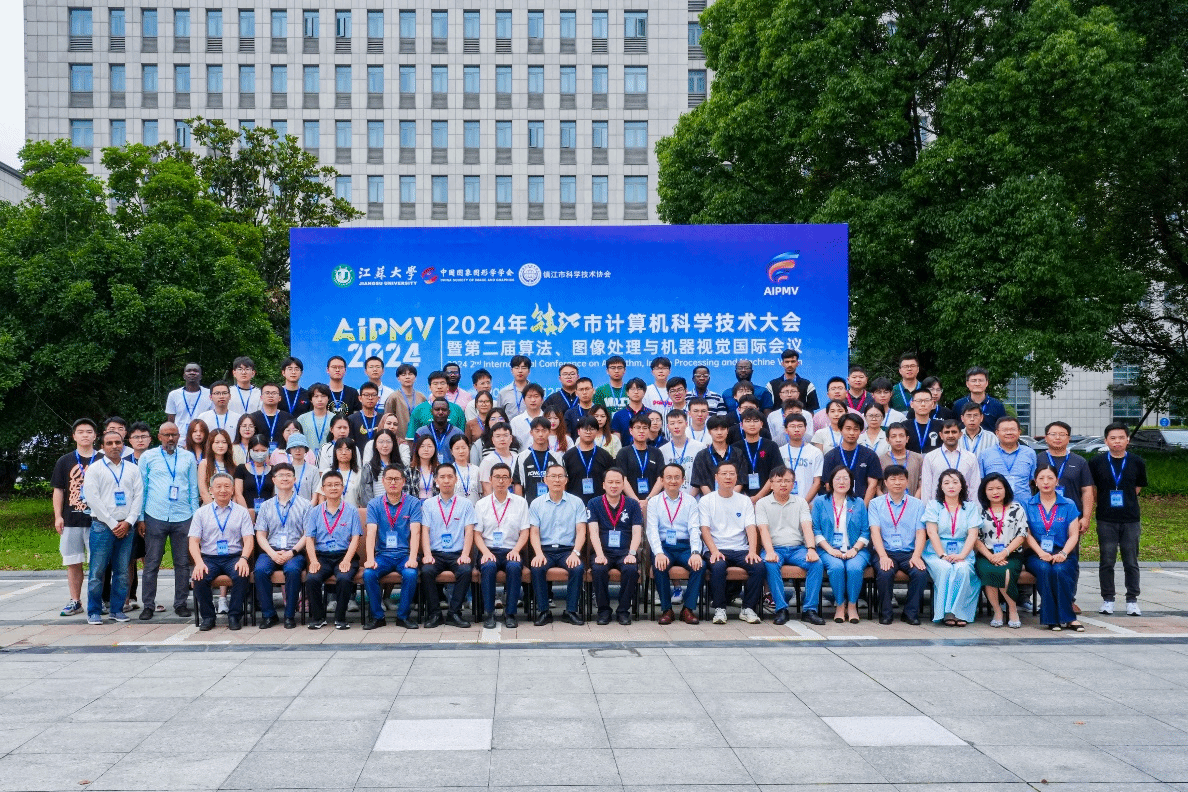From July 12th to 14th, 2024, the "2024 Zhenjiang Computer Science and Technology Conference and the 2nd International Conference on Algorithms, Image Processing, and Machine Vision (AIPMV2024)" was successfully held in Zhenjiang, Jiangsu Province. Organized by Jiangsu University, China Society of Image and Graphics (CSIG), and Zhenjiang Association for Science and Technology, the conference was hosted by Zhenjiang Computer Society, School of Computer Science and Communication Engineering of Jiangsu University, and the Digital Entertainment and Intelligent Generation Professional Committee of CSIG. It was co-organized by Jiangsu University of Science and Technology, Zhenjiang Software Industry Association, and AEIC Academic Exchange Center. With "Algorithms, Image Processing, and Machine Vision" as its core theme, the conference brought together top scholars and experts from both domestic and international fields to discuss the latest developments and future trends in computer science and technology.

The conference invites four esteemed academic guests: Professor Changsheng Xu from the Institute of Automation, Chinese Academy of Sciences, Professor Zhi Gao from Wuhan University, Professor Ming Dong from Wayne State University in the United States, and Professor Maozhen Li from Brunel University London. They delivered in-depth presentations and engaged in discussions on cutting-edge topics such as "Connecting Isolated Social Multimedia Big Data," "Intelligent Diagnosis of Surface Anomalies in Remote Sensing," "Image-to-Image Translation and Generation of Synchronized CT," and "Interpretability and Computational Efficiency of Deep Neural Networks," respectively.
Professor Changsheng Xu's report delved into the importance of social media data fusion, proposing a new user-centric research paradigm that offers fresh perspectives for value mining in social multimedia data. Professor Zhi Gao introduced a graph neural network-based framework for surface anomaly detection, showcasing the latest advancements in the field of intelligent interpretation of remote sensing imagery. Professor Ming Dong's presentation focused on medical image synthesis, particularly techniques for synthesizing CT images based on generative adversarial networks, providing a new perspective on the application of image-to-image translation technology. Professor Maozhen Li, starting from the interpretability and computational efficiency of deep neural networks, discussed the development of lightweight AI models and the challenges faced by heavyweight AI models like ChatGPT.

During the conference, over 120 experts, scholars, international students, and graduate students from universities such as the University of Sydney, Nanjing University of Aeronautics and Astronautics, Nanjing University of Science and Technology, Hefei University of Technology, Shanghai Normal University, and Fujian Normal University, gathered alongside elite representatives from Zhenjiang IT companies including Jiangsu Jinhaixing Navigation Technology Co., Ltd., Jiangsu Yidie Software Technology Co., Ltd., Zhenjiang Youchuang Information Technology Co., Ltd., Jiangsu Kehai Intelligent Systems Co., Ltd., Jiangsu Lianmeng Information Engineering Co., Ltd., Jiangsu Beehive Technology Co., Ltd., Jiangsu Keda Huifeng Technology Co., Ltd., and Jiangsu Chengzhi Software Technology Co., Ltd. Through keynote speeches and other formats, they engaged in in-depth exchanges and discussions on topics related to algorithms, image processing, and machine vision. These exchanges not only facilitated mutual understanding between the academic and industrial communities but also laid the foundation for future collaborative research endeavors.



